It’s spooky season, so Jadrian and Matt are lightening the mood by talking Halloween economics! They dive into everything you wanted to know—and maybe things you didn’t know you wanted to know—about how economic concepts like supply and demand, behavioral incentives, and scarcity play out during Halloween. Tune in for a fun conversation on the unexpected economics behind costumes, candy, and more.
In this episode, we discuss:
How limited-time Halloween goods teach us about supply, demand, and seasonal markets.
The economics behind Halloween pop-up stores and why they thrive during the season.
Conspicuous consumption and why people go all out on costumes and decorations.
Gains from trade—Halloween style!—as kids barter for their favorite candies.
Why candy prices don’t increase despite an obvious increase in demand
And a whole lot more!
Catch up on some old episodes:
You can also listen to us on Google Podcasts, TuneIn Radio, and Apple Podcasts. If one of these is your go-to podcast service, be sure to rate us and subscribe!
Watch this episode on YouTube:
Some show notes:
We’re in the middle of the semester, so the end is in sight! Jadrian just wrapped up a mid-semester feedback session and Matt is on his way back home after giving some talks in Kansas. Both were great motivations for drinks this evening! Jadrian went with a Razz-Wheat from Oaken Barrel Brewing Company courtesy of superfan Tim Dye. Meanwhile, Matt kept it classic with a Boulevard Pale Ale from Kansas City’s Boulevard Brewing Company while waiting for his flight.
We’re releasing this week’s episode a few days early since it’s coming out around Halloween! We thought it would be a great idea to chat about how economic principles show up in everything from candy to costumes. A lot of people go all out with extravagant decorations, high-end costumes, or top-shelf treats for trick-or-treaters. Some people are buying it because they really enjoy Halloween, but there are also people using this as a chance to show neighbors and passersby that they can afford to invest in seasonal luxury.
Halloween is prime time for miniature candy, and it’s no surprise that demand skyrockets as trick-or-treaters gear up for the holiday. But here’s a question to consider: with such a high demand for candy, why don’t prices increase dramatically? This phenomenon offers a perfect example to teach supply and demand. Large candy producers prepare for the Halloween rush far in advance, increasing supply to meet that demand and keep prices low. You can more easily see supply and demand in action the day after Halloween when candy prices are cut in half as demand decreases drastically.
There have also recent articles highlighting how gummies and sour candies are taking the spotlight, with changing consumer preferences driving part of the shift. But there’s more to it: rising cocoa prices have made chocolate candy notably pricier, prompting candy makers to turn to alternatives like caramel and cinnamon flavors. This change highlights both supply and demand dynamics and price elasticity—since candy is largely given away during Halloween, consumers are sensitive to price increases, making candy companies think twice before passing costs onto buyers. For a deeper dive into this topic, check out Jadrian’s latest newsletter:
Pop-up Halloween stores like Spirit Halloween are a seasonal staple, and they present a unique business model that’s profitable despite operating for only a few months each year. Matt highlights the role of supply and demand in creating a market for these temporary shops; the surge in demand for costumes and decorations allows them to capitalize on seasonal consumer interest. Jadrian, on the other hand, finds these stores a perfect way to illustrate the 'shutdown rule' in economics.
The final Halloween economics lesson is all about gains from trade. Halloween night transforms into a lively marketplace as kids barter candy, trading treats they don’t like for those they prefer—a perfect, hands-on example of voluntary exchange. Matt shared a family tradition where he encouraged his kids to avoid being 'candy socialists' and instead negotiate for the sweets they wanted most.
This week’s pop culture references:
Jadrian turned the NRF’s annual Halloween costume rankings into a trivia contest for Matt so that we could also chat about consumer demand for popular movie character costumes. Last year, Barbie costumes were really popular following the release of the hit movie, making it one of the top choices for Halloween.
This year, Beetlejuice made an appearance in the top 10 adult costumes, largely due to the buzz around the movie’s much-anticipated sequel. It's a great example of how entertainment trends influence Halloween spending and consumer behavior, as fans gravitate toward costumes inspired by the latest hits.


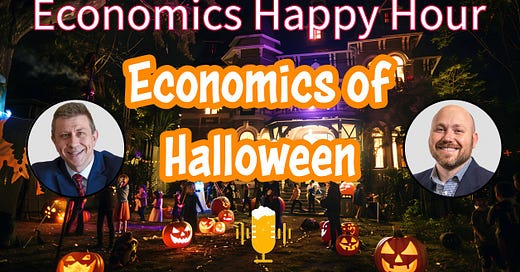
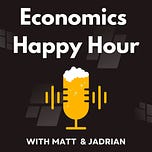




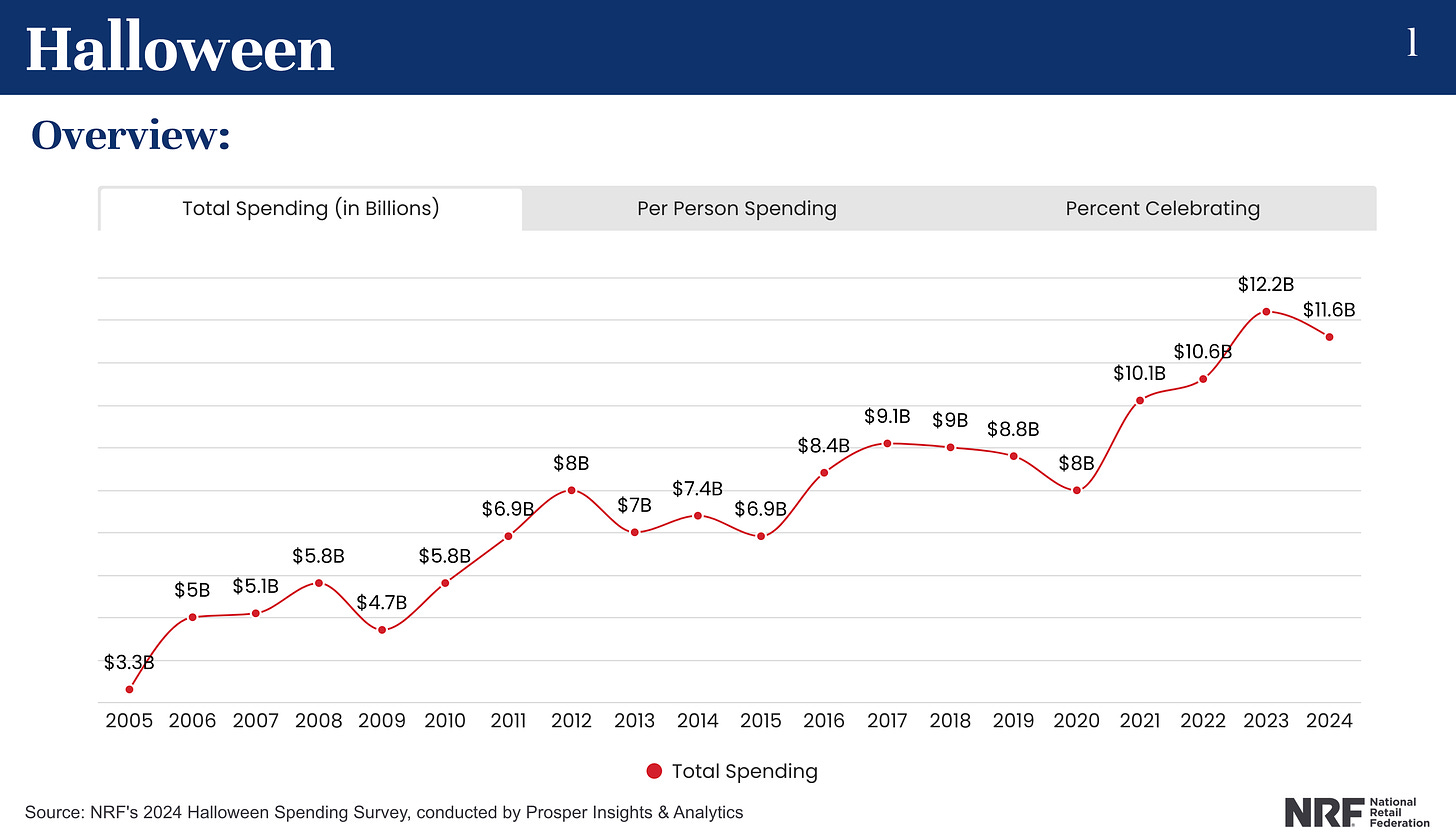

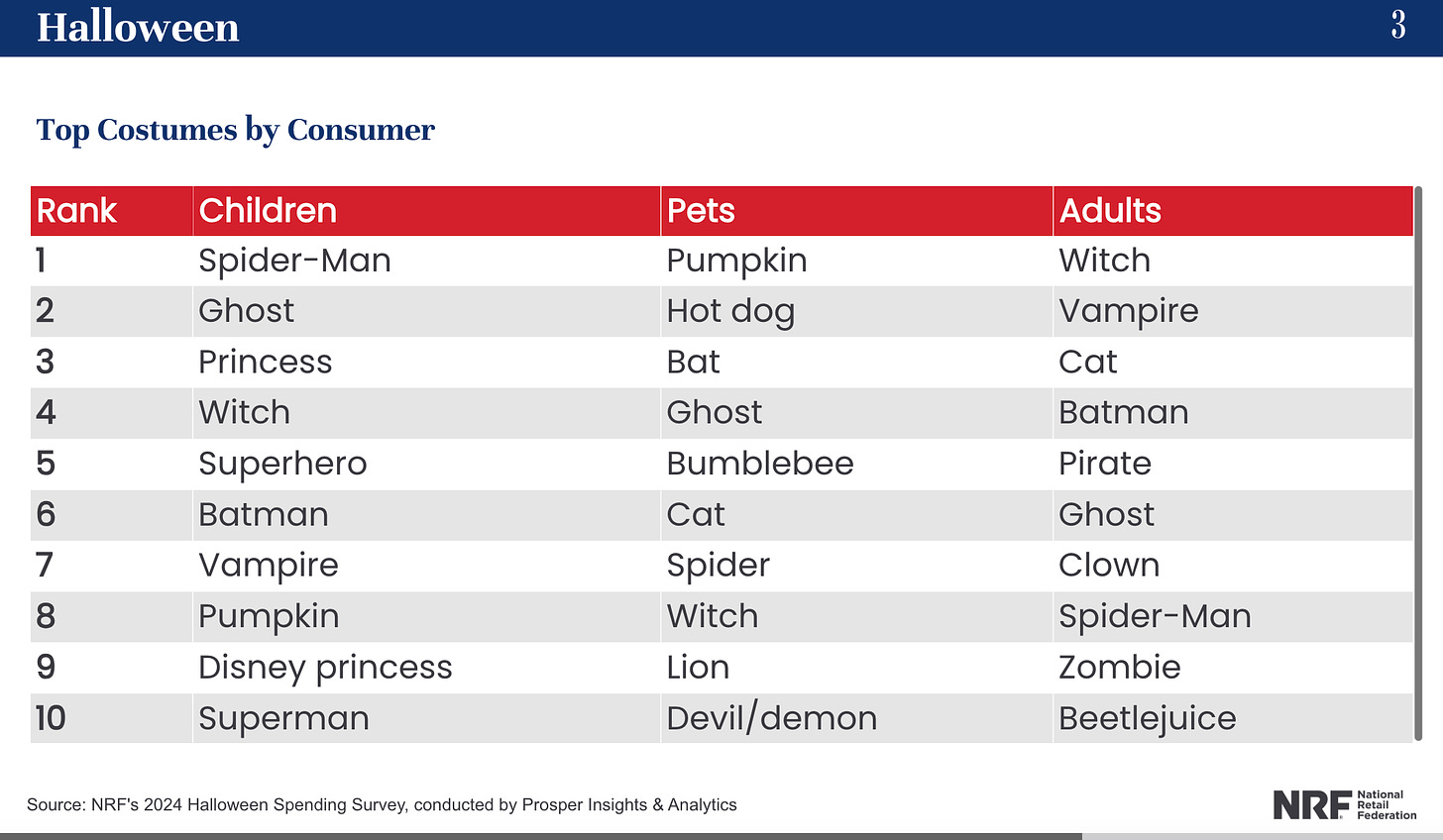







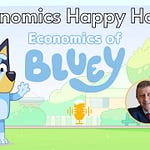

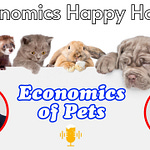

Share this post